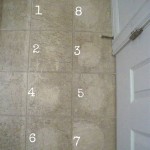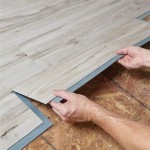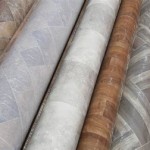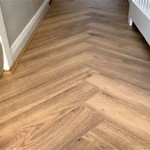Rustic Flooring Options: A Comprehensive Guide
Rustic flooring offers a timeless aesthetic, evoking feelings of warmth, authenticity, and connection to nature. Its charm lies in the imperfections and unique characteristics that distinguish it from more uniform flooring styles. The term "rustic" encompasses a wide array of materials and finishes, making it adaptable to various architectural styles and interior design preferences. This article explores several popular rustic flooring options, detailing their properties, advantages, and installation considerations.
The appeal of rustic flooring stems from a desire to create spaces that feel lived-in and comfortable. Unlike modern, minimalist designs that often emphasize clean lines and flawless surfaces, rustic aesthetics embrace irregularities and signs of age. These imperfections, such as knots, grain variations, and distressed finishes, contribute to the floor's character and create a visually engaging surface.
Solid Hardwood Flooring: A Timeless Rustic Choice
Solid hardwood remains a top choice for rustic flooring, prized for its durability, longevity, and natural beauty. The inherent grain patterns and color variations in wood add depth and character to any room. Choosing wider planks further enhances the rustic aesthetic, as they showcase more of the wood's natural features. Popular wood species for rustic hardwood flooring include oak, hickory, maple, and pine, each possessing distinct characteristics.
Oak is known for its durability and prominent grain patterns, making it a versatile option suitable for high-traffic areas. Hickory is even harder than oak, offering superior resistance to dents and scratches. Maple, while more uniform in color than oak or hickory, can be stained to achieve a rustic appearance. Pine, a softer wood, develops a beautiful patina over time, adding to its aged character. However, its softness makes it more susceptible to wear and tear.
To enhance the rustic feel of solid hardwood flooring, consider opting for a matte finish. A matte finish minimizes shine and highlights the natural texture of the wood. Distressing techniques, such as hand-scraping, wire-brushing, and adding saw marks, can further enhance the aged appearance of the flooring. These techniques create subtle imperfections that mimic the wear and tear of years of use.
Installation of solid hardwood flooring typically requires professional expertise, as it involves nailing or gluing the planks to a subfloor. Due to its susceptibility to moisture, solid hardwood is generally not recommended for installation in basements or bathrooms, where humidity levels are high. Proper acclimation of the wood to the environment before installation is crucial to prevent warping or cupping.
Maintaining solid hardwood flooring involves regular sweeping or vacuuming to remove dirt and debris. Occasional damp mopping with a wood-floor cleaner is also recommended. Avoid using excessive water, which can damage the wood. Periodic refinishing may be necessary to restore the floor's appearance and protect it from wear.
Engineered Hardwood Flooring: A Versatile Alternative
Engineered hardwood flooring offers a similar aesthetic to solid hardwood but with increased stability and resistance to moisture. It consists of a thin layer of hardwood veneer bonded to a core of plywood or fiberboard. This construction makes it less prone to warping or cupping than solid hardwood, making it suitable for installation in a wider range of environments, including basements and areas with fluctuating humidity levels.
The rustic appeal of engineered hardwood lies in the hardwood veneer. Manufacturers often use the same wood species as solid hardwood flooring, such as oak, hickory, and maple, allowing for a consistent aesthetic. Like solid hardwood, engineered hardwood can be distressed and finished to enhance its rustic character. Wire-brushing, hand-scraping, and staining techniques are commonly employed to create an aged and textured appearance.
Engineered hardwood flooring is available in various plank widths and thicknesses. Wider planks contribute to a more rustic look, while thicker veneers offer greater durability and allow for more refinishing opportunities. The finish on engineered hardwood is typically more durable than that on solid hardwood, providing added protection against scratches and wear.
Installation of engineered hardwood flooring is generally easier than solid hardwood, as it can be installed using a variety of methods, including floating, gluing, or nailing. Floating installations are particularly popular, as they do not require fastening the planks to the subfloor. This method allows for expansion and contraction of the flooring, minimizing the risk of warping or buckling.
Maintaining engineered hardwood flooring is similar to solid hardwood. Regular sweeping or vacuuming and occasional damp mopping are recommended. Avoid using excessive water and harsh cleaning chemicals. While engineered hardwood can be refinished, the number of times it can be refinished is limited by the thickness of the veneer.
Laminate Flooring: An Affordable Rustic Option
Laminate flooring offers a cost-effective alternative to hardwood, providing a similar appearance at a fraction of the price. It consists of a high-density fiberboard core topped with a photographic layer that mimics the look of wood. A clear wear layer protects the photographic layer from scratches and wear.
Recent advancements in laminate flooring technology have made it possible to create highly realistic wood-look finishes. Laminate flooring can effectively replicate the appearance of various wood species, including oak, hickory, and pine. Embossed textures and realistic grain patterns further enhance the authenticity of the flooring, mimicking the look and feel of real wood.
For a rustic aesthetic, consider choosing laminate flooring with distressed finishes, such as hand-scraped or wire-brushed textures. These finishes add depth and character to the flooring, creating a more aged and weathered appearance. Laminate flooring is also available in a variety of plank widths and lengths, allowing for customization of the floor's appearance.
Laminate flooring is known for its durability and resistance to scratches, stains, and fading. It is a good choice for high-traffic areas and homes with pets or children. However, it is not as water-resistant as some other flooring options, so it is important to clean up spills promptly to prevent damage.
Installation of laminate flooring is relatively straightforward, typically involving a click-lock system that allows the planks to be easily connected. Most laminate flooring is designed for floating installation, meaning that it is not directly attached to the subfloor. This makes it a suitable option for installation over existing flooring, provided that the subfloor is level and stable.
Maintaining laminate flooring involves regular sweeping or vacuuming and occasional damp mopping. Avoid using excessive water or abrasive cleaners, as these can damage the flooring. Unlike hardwood, laminate flooring cannot be refinished.
Tile Flooring: A Durable Rustic Choice
Tile flooring, particularly ceramic and porcelain tile, can also achieve a rustic aesthetic. While often associated with contemporary designs, tile can be manufactured to mimic the appearance of wood, stone, and other natural materials, making it a versatile choice for creating rustic floors.
Wood-look tiles are becoming increasingly popular, offering the durability and water resistance of tile with the aesthetic appeal of wood. These tiles are available in a variety of wood species and finishes, including distressed and reclaimed wood looks. The realistic grain patterns and textures create a convincing illusion of real wood flooring.
Stone-look tiles, such as slate, travertine, and limestone, can also contribute to a rustic aesthetic. These tiles evoke a natural and earthy feel, adding warmth and character to a space. The variations in color and texture inherent in natural stone are replicated in stone-look tiles, creating a visually interesting surface.
Tile flooring is known for its exceptional durability and resistance to water, stains, and scratches. It is a good choice for kitchens, bathrooms, and other areas prone to moisture. Tile is also easy to clean and maintain, requiring only regular sweeping or mopping.
Installation of tile flooring generally requires professional expertise, as it involves setting the tiles in mortar and grouting the joints. Proper subfloor preparation is crucial to ensure a level and stable surface. Tile can be installed over a concrete slab or a plywood subfloor, provided that the subfloor is properly reinforced.
Maintaining tile flooring involves regular sweeping or mopping with a mild detergent. Grout lines may require occasional cleaning with a grout cleaner to remove stains and discoloration. Sealing the grout can help to prevent staining and make it easier to clean.
Concrete Flooring: An Industrial Rustic Vibe
Concrete flooring, often associated with industrial and modern designs, can also be adapted to create a rustic aesthetic. Polished concrete, stained concrete, and concrete overlays can all contribute to a unique and durable rustic floor.
Polished concrete involves grinding and polishing the existing concrete slab to create a smooth, reflective surface. Staining concrete allows for the introduction of color and variations in tone, enhancing its visual appeal. Acid stains react chemically with the concrete, creating permanent and unique color patterns.
Concrete overlays are thin layers of cement-based material applied over the existing concrete slab. These overlays can be textured, stamped, or stained to create a variety of rustic looks, including wood-look concrete and stone-look concrete.
Concrete flooring is exceptionally durable and resistant to wear and tear. It is a good choice for high-traffic areas and industrial settings. Concrete is also relatively easy to maintain, requiring only regular sweeping and occasional mopping.
Installation of concrete flooring requires specialized equipment and expertise. Polishing, staining, and applying overlays are all processes best left to professionals. Proper surface preparation is crucial to ensure a successful installation.
Maintaining concrete flooring involves regular sweeping or mopping with a mild detergent. Sealing the concrete is essential to protect it from stains and moisture. Periodic resealing may be necessary to maintain its appearance and durability.
Key Rustic Flooring Considerations: Texture, Color, and Width
Beyond material choice, several key design considerations contribute to the overall rustic aesthetic of flooring. These include texture, color, and plank width, each playing a significant role in achieving the desired visual effect.
Texture is crucial for conveying a sense of age and authenticity. Distressed finishes, such as hand-scraping, wire-brushing, and saw marks, add tactile and visual interest to the floor. These techniques create subtle imperfections that mimic the wear and tear of years of use, enhancing the rustic charm.
Color plays a significant role in setting the tone of the space. Warm, earthy tones, such as browns, grays, and tans, are commonly associated with rustic aesthetics. These colors evoke a sense of nature and create a cozy and inviting atmosphere. Staining the flooring can help to achieve the desired color and enhance the wood grain patterns.
Plank width also contributes to the overall look of the floor. Wider planks tend to create a more rustic and expansive feel, showcasing more of the wood's natural characteristics. Narrower planks can also be used, but they may create a more formal or contemporary aesthetic.

Ask The Experts Star Tile Centre Rustic Wood Flooring Options Myniagara

The 4 Best Rustic Flooring Options For A Country Style Home Inc

Rustic Flooring Get A Weathered Look With Reclaimed Wood

Rustic Cabin Interior Flooring Ideas America

Rustic Cabin Interior Flooring Ideas America

Rustic Flooring Home Design Options Carlisle Wide Plank Floors

Rustic Flooring Options Adding Warmth And Character To Your Home In San Francisco Bay Area The Floor

Rustic Cabin Interior Flooring Ideas America

Rustic Flooring Home Design Options Carlisle Wide Plank Floors
Rugged Reclaimed Wood Flooring Options For A Comfortable Look Pioneermillworks
Related Posts








